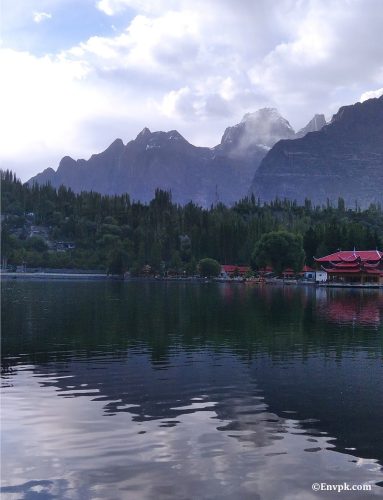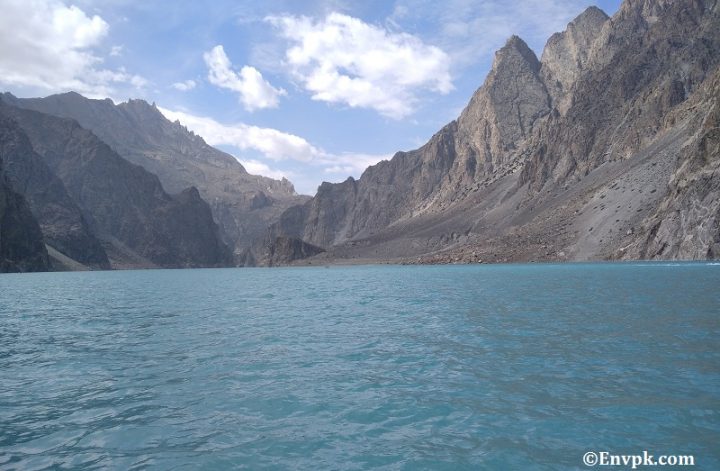Lakes of Pakistan:
Pakistan is blessed with a lot of natural lakes, as well as man-made ones. There is such an abundance of lakes in Pakistan particularly in the Gilgit Baltistan region (approx. 500 lakes) that are still undiscovered and unnamed even to the local population. There are over 60 well-known lakes in Pakistan. 51 are natural and 9 of those are man-made lakes. However, both kinds of lakes are renowned for their distinctive beauty and aesthetic.
Also check out: 12 Most Beautiful And Unique Lakes in the World in Pictures
List of Lakes in Pakistan:
- Manchar Lake: It is the largest lake in Pakistan covering an area of 260 square kilometers. It is located in Jamshoro District of Sindh and is a natural freshwater lake that is also the largest one of its kind in South Asia.
- Khanpur Lake: An artificial lake located in Khanpur district, KPK.
- Banjosa Lake: Also an artificial lake that is located near the city of Rawalkot in Poonch District, Azad Jammu Kahsmir.
- Attabad Lake: It is a natural lake located in Hunza Valley, Gilgit Baltistan. It is the largest lake of Gilgit Baltistan and is also known as Hunza Lake. It was created naturally due to the waters of Hunza River being blocked and diverted by landslide in 2010.
- Barah Lake: This is located in Barah Valley of Gilgit Baltistan. It covers an area of 0.21 square kilometers.
- Batura Lake: It is also located in Gilgit Baltistan near the upper region of Hunza Valley and has been formed largely in part due to the meltwater coming from the glaciers.
- Borith Lake: It is a natural saltwater lake and is located in the Gojal Village of Hunza Valley in Gilgit Baltistan.
- Shandoor Lake: It is also known as Handarap lake of the Ghizar Valley, Gilgit Baltistan.
- Hasanabad Lake: It is also known by the name of Shispare lake and is formed by the meltwater coming from the Shispare glacier and continues to grow with time. It has an area of 0.35 square kilometers.
- Rush Lake: It is the highest lake in Pakistan and the highest alpine lake in the world. it is located in Nagar Valley of Gilgit Baltistan.
- Satpara Lake: It has an area of 4.5 square kilometers and is located in the Skardu Valley of Gilgit Baltistan. It is the second largest freshwater lake in Gilgit Baltistan after Attabad/Hunza Lake.
- Sheosar Lake: Located in the highest plateau of the world- the Deosai Plateau this lake is also in Gilgit Baltistan and is formed naturally.
- Shimshal Lakes: These are 2 lakes together and are located in Gilgit Baltistan.
- Upper Kachura Lake: A natural lake located in Skardu District of Gilgit Baltistan surrounded with Apricot trees. It has a depth of 70 meters and is not well explored due to the rough terrain.
- Ansoo Lake: An artificial lake in Kaghan Valley of Mansehra District in KPK.
- Karambar Lake: It is the 33rd highest lake in the world and is located in Chitral. It is 3.9 km long with a depth of 52 meters.
- Hadero Lake: It is also an artificial lake that was declared as a wildlife sanctuary in 1977. It is a saltwater lake located in Sindh.
- Haleji Lake: An artificial lake that is located in Thatta, Sindh. It is the largest water fowl reserve area in Asia.
- Kallar Kahar Lake: Located in Chakwal district in Punjab, it is an artificial saltwater lake.
- Keenjhar Lake: It is located in Thatta , Sindh and is one of the largest freshwater lakes in Pakistan and subject of many folktales.
- Khabikki Lake: Located near the Khabikki Village of Khushab district Punjab, it is an artificial saltwater lake.
- Lulusar Lake: It is located in Naran Valley in KPK. It also has a baby lake beside it and is the main source of Kunhar River.
- Saifulmuluk Lake: Located in Kaghan Valley in KPK, with an area of 2.5 square kilometers.
Also read: Can Rivers & Lakes be Saved from Environmental Degradation?

Other remaining lakes include:
Natural Lakes:
- Dakholi Lake (Khaplu valley)
- Ghanche Lake (Khaplu valley)
- Ghorashe Lake (Kharmang valley)
- Handarap Lake (Ghizar valley)
- Hrkolong Lake (Khaplu valley)
- Khalti Lake (Khalti, Ghizar)
- Katpanah Lake (Skardu valley)
- Naltar Lake (Naltar valley)
- Lower Kachura Lake (Skardu)
- Phander Lake (Phander, Ghizar valley)
- Raman Lake (Astore valley)
- Bagshar Lake (Samahni valley)
- Chitta Katha Lake (Shonter valley)
- Drigh Lake (Qambar Shahdadkot, Sindh)
- Dudipatsar Lake (Kaghan valley)
- Dudibach Sar Lake (Kaghan valley)
- Ganga Lake (Bagh District, AJK)
- Hadero Lake (Thatta)
- Haley Lake (Thatta)
- Hamal Lake (Qambar Shahdadkot, Sindh)
- Hanna Lake (Quetta)
- Jahlar Lake (Soon Valley)
- Kundol Lake (Swat valley)
- Mahodand Lake (Kalam valley)
- Namal Lake (Mianwali)
- Payee Lake (Kaghan valley)
- Pyala Lake (Naran valley)
- Ratti Gali (Bedlam valley, AJK)
- Saral Lake (Neelam valley, AJK)
- Shakoor Lake (Sindh)
- Shonter Lake (Neelam valley, AJK)
- Siri Lake (Kaghan valley)
- Spin Khwar Lake (Swat valley)
- Subri Lake (Muzaffarabad, AJK)
- Swaik Lake (Khandoa village, Chakwal)
- Uchhali Lake (Soan Sakaser valley, Salt Range)
Also read: Impacts of Climate Change on Water Resources of Pakistan

Artificial or man-made Lakes:
- Banjosa Lake (Poonch District, AJK)
- Chotiari Lake (Sambhar, Sindh)
- Hub Lake (Karachi & Lasbela)
- Mangla Lake (Mirpur, AJK)
- Rawal Lake (Islamabad)
- Simli Lake (Islamabad)
- Tanda Lake (Kohat)
- Tarbela Lake (Haripur District)
- Shangrila Lake (Skardu, GB)
You may also be interested in:
Glacial Lake Outburst Flood (GLOF) -Causes, Impact, Solution
I hope you all liked this post! Please comment below if you have any suggestions, comments, or feedback! We at #envpk love hearing from our readers! Thanks!




